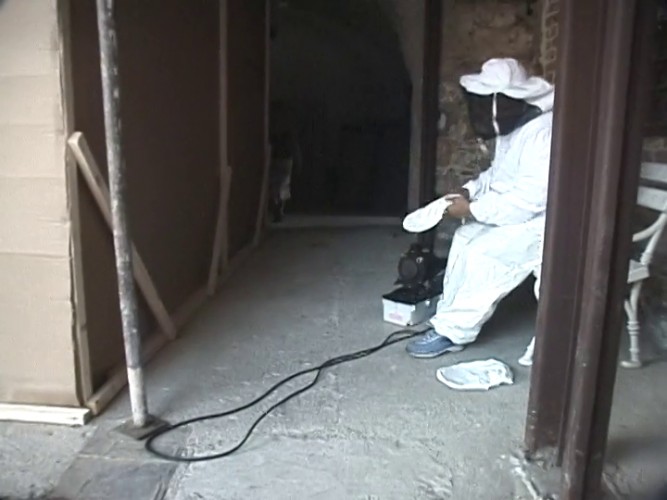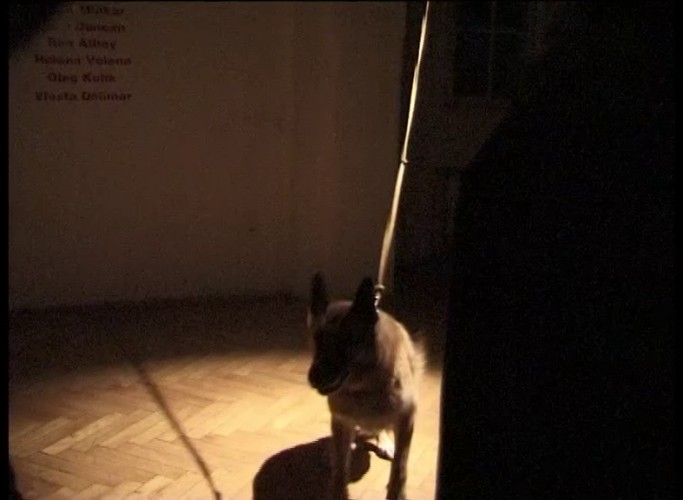In Ljubljana castle, Oliver Kunkel displayed a glass box resembling an induction chamber or glove box, with a sealed opening that participants could stick their arms through. The box contained live mosquitoes that were said to have been exposed to the HIV virus, although the exhibitors also stressed that the mosquitoes were harmless and not in fact infected. Viewers could decide whether or not to stick their arms into the box and expose their flesh to these mosquitoes that had allegedly fed on the blood of an HIV-positive donor.
The participatory aspect of this project effectively demonstrated the power of imagination to instill fear beyond rationalization. Participants confronted and embodied this fear in whichever choice they made—either by feeling vulnerable in such uncomfortable proximity to a blood-borne pathogen, or by avoiding contact, even given the scientific knowledge that mosquitoes are physically incapable of carrying and transmitting HIV.
Kunkel’s project was conceived for the annual BREAK art festival, and the theme for the year’s exhibition was entitled “Invisible Threat.” Kunkel claims he designed this project to draw awareness to the “invisible threat” of HIV, but evidently, the project also exposed our irrational fear of AIDS and ignorance concerning one of the world’s most pervasive epidemics. What began as a modest, object-based project amounted to a mini-documentary and social commentary, after one of the participants triggered mass panic and publicity by “accidentally” breaking the box. Officers evacuated the tourist site and quarantined the premises, followed by investigations involving the Health Institute of Ljubljana and Slovenia’s Ministry of Internal Affairs to determine whether the artist had committed a prosecutable offense.
Though the artist and curators dismiss the public’s hysterical reaction as merely an unforeseen consequence of an innocent attempt simply to raise awareness of AIDS, all signs indicate a hoax, deliberately using shock tactics to foster media publicity. Kunkel confessed that he merely collected the mosquitoes from backyard water barrels and that they had not in fact been exposed to an HIV patient. More importantly, what had initially appeared as an accidental breaking of the box we later discover had been staged and plotted since the project’s construction (as if the coincidentally apt title, “BREAK,” isn’t already enough of a hint.) Though clearly a gimmick, I personally feel that the project’s saving grace is that it operates effectively in many different levels: as a physical interactive object that gestures towards art history, as a political event that manipulates both bureaucracy and new media to its advantage, and even the metaphorical implications of rupture in the very act of breaking the box.







